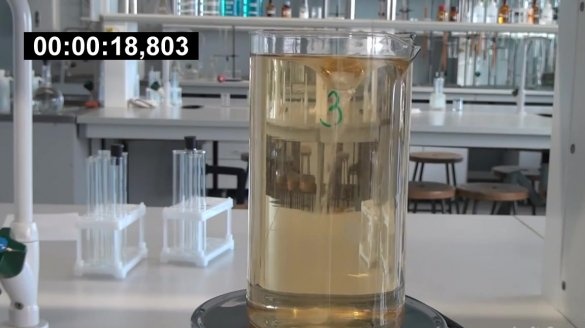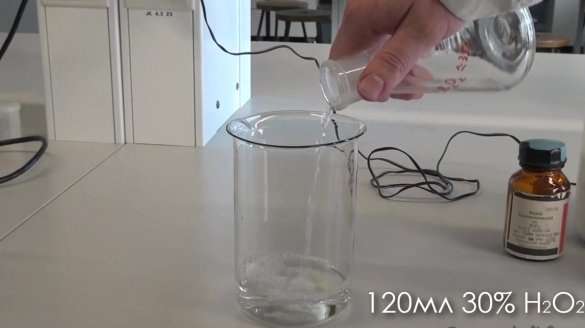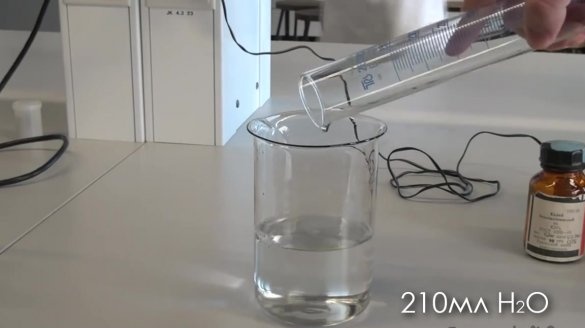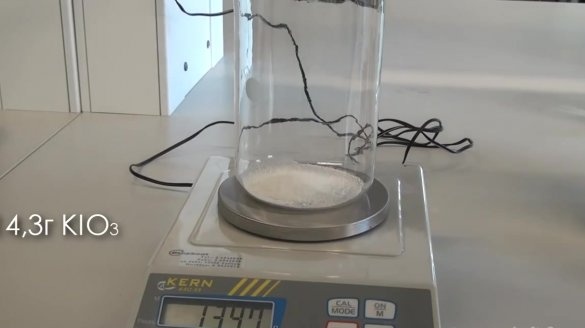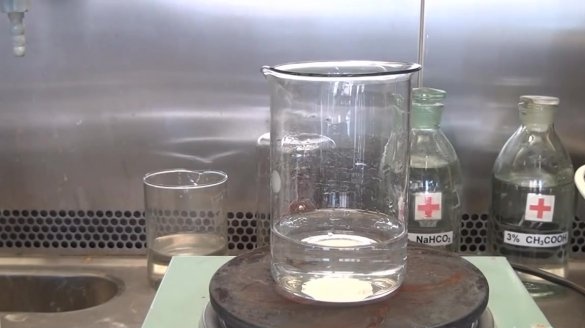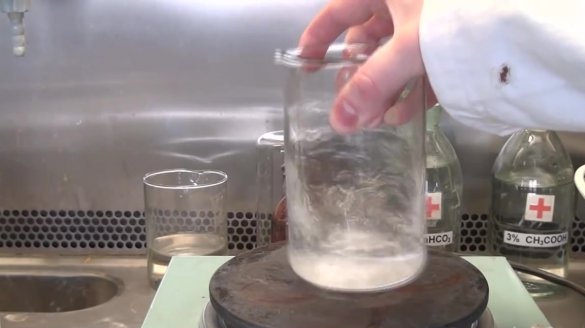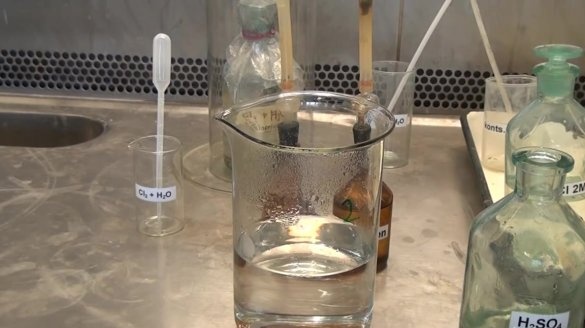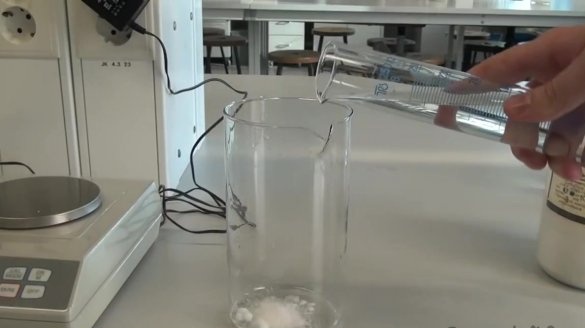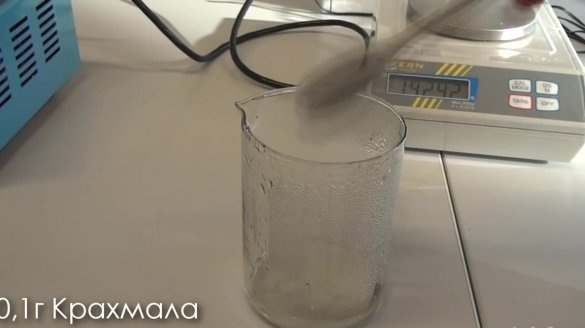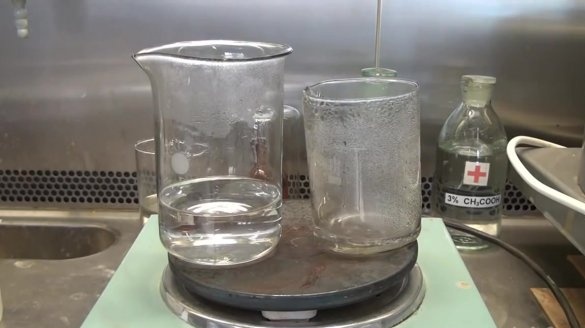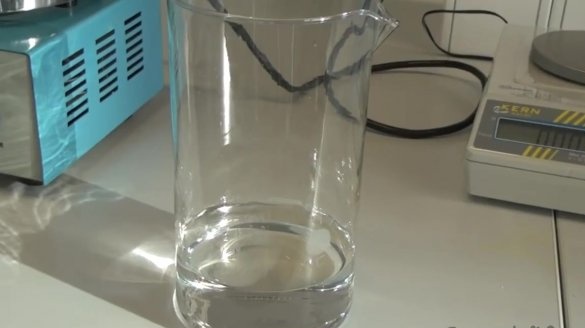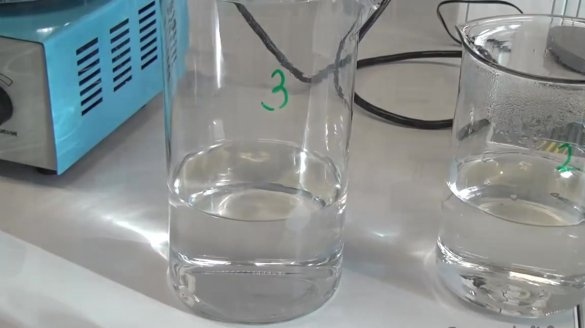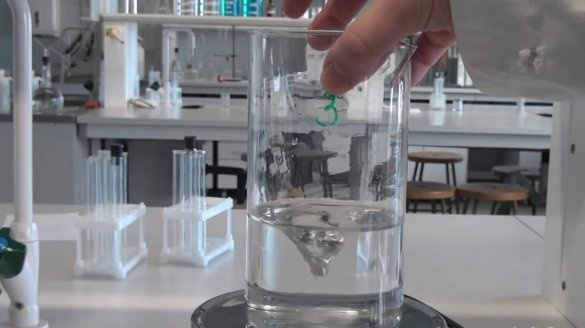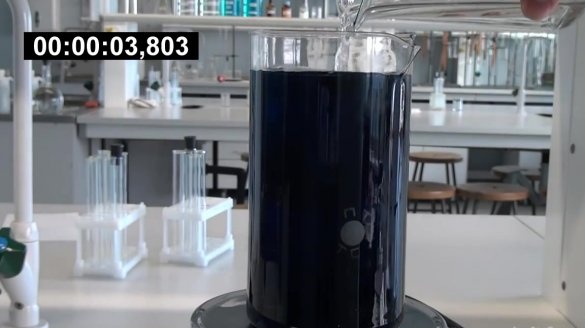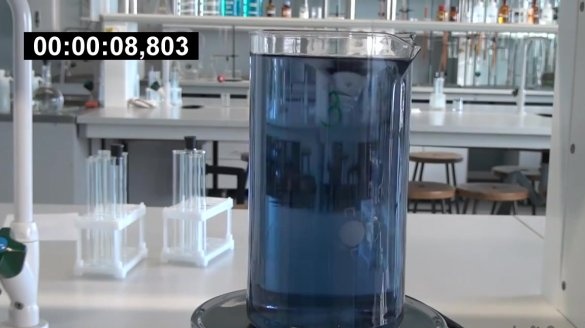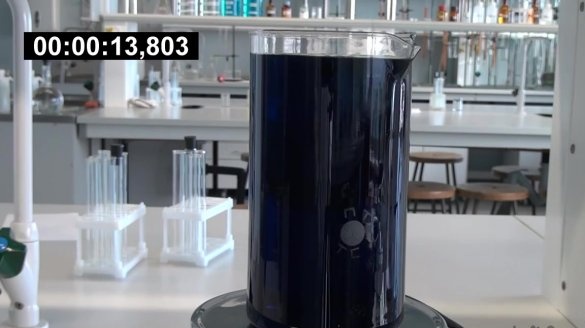We present to your attention another material devoted to chemical experiments. This time, an equally spectacular experiment will be considered, during which we obtain a chemical clock or the Briggs-Rauscher vibrational reaction.
You can find out exactly how to get this reaction by watching the video
[media = https: //www.youtube.com/watch? v = aV-1K5WMD7k]
So, for the manufacture of chemical watches, we need:
- potassium iodate;
- malonic acid;
- 30% hydrogen peroxide;
- potato starch;
- manganese sulfate;
- a glass
To carry out the reaction, we first need to prepare three solutions. The first solution is quite simple. We take a large glass and pour 120 ml of 30 percent hydrogen peroxide into it. Then add 210 ml of distilled water. The first solution is ready.
In order to prepare a second solution, we need to weigh the substances. Take a large glass and measure out 14.3 g. potassium iodate. Next, pour 200 ml of distilled water into a glass. Since the solubility of potassium iodate in water is not very high, in order to accelerate the dissolution, we heat the mixture on a stove.
After all potassium iodate has dissolved, add another 1.5 ml of concentrated sulfuric acid to the glass.
After that, we bring the solution to a volume of about a third of a liter. The second solution is ready.
Prepare a third solution. To do this, take a large glass and measure there 3 grams of manganese sulfate.
After we measured the manganese sulfate, add 5.2 g of malonic acid to the glass.
Finally add 230 ml of distilled water. On this, the preparation of the last solution has not yet ended.
We take another glass of hot water and measure out there about 0.1 g of potato starch. Starch is also not very soluble in water, so we contribute to this process by putting the glass on the stove for about 10 minutes. After that, we should get the so-called starch glue, which we must pour into a glass with a third solution.
After that, we bring the volume of the solution of the third glass to a volume equal to about a third of a liter.
Now you can safely proceed to the most important thing. You can conduct a reaction.The sequence of mixing solutions in principle does not matter. The author of the experiment chooses the sequence from the reverse. The reaction must be carried out on a magnetic stirrer, since the mixture will need to be constantly mixed so that the reaction proceeds properly.
We take a large glass with a third solution, put it on a magnetic stirrer and turn on the stirrer.
Pour the second solution and finally pour the first.
After this, the reaction begins. The solution is first painted yellow.
Then in blue.
Then it discolors.
After this, the step is repeated. This reaction is called a chemical clock. After each cycle, the reaction slows down, and the next cycle takes a little longer than the previous one.

